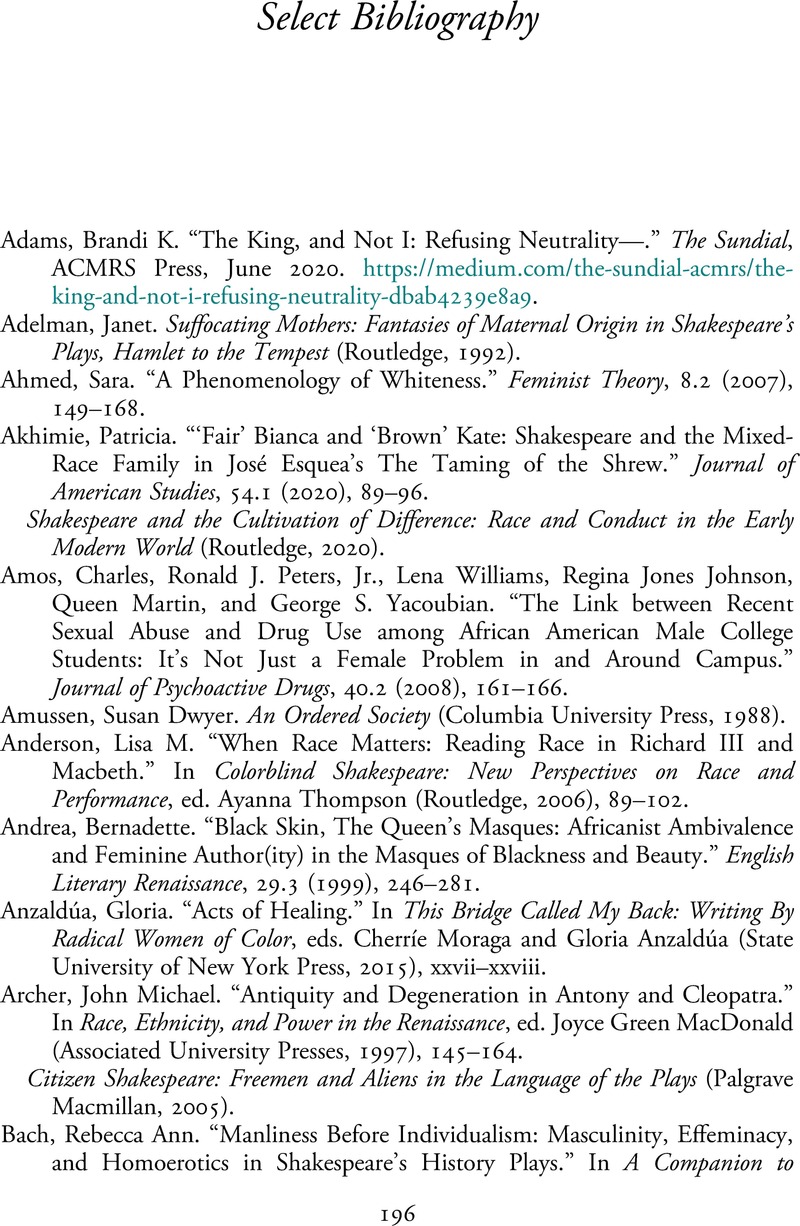Book contents
- Shakespeare’s White Others
- Reviews
- Shakespeare’s White Others
- Copyright page
- Dedication
- Contents
- Figures
- Preface
- Acknowledgments
- Introduction
- Chapter 1 Somatic Similarity
- Chapter 2 Engendering the Fall of White Masculinity in Hamlet
- Chapter 3 On the Other Hand
- Chapter 4 “Hear Me, See Me”
- Conclusion
- Appendix
- Select Bibliography
- Index
- References
Select Bibliography
Published online by Cambridge University Press: 28 July 2023
- Shakespeare’s White Others
- Reviews
- Shakespeare’s White Others
- Copyright page
- Dedication
- Contents
- Figures
- Preface
- Acknowledgments
- Introduction
- Chapter 1 Somatic Similarity
- Chapter 2 Engendering the Fall of White Masculinity in Hamlet
- Chapter 3 On the Other Hand
- Chapter 4 “Hear Me, See Me”
- Conclusion
- Appendix
- Select Bibliography
- Index
- References
Summary

- Type
- Chapter
- Information
- Shakespeare's White Others , pp. 196 - 210Publisher: Cambridge University PressPrint publication year: 2023

